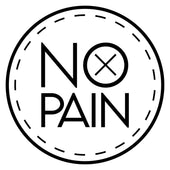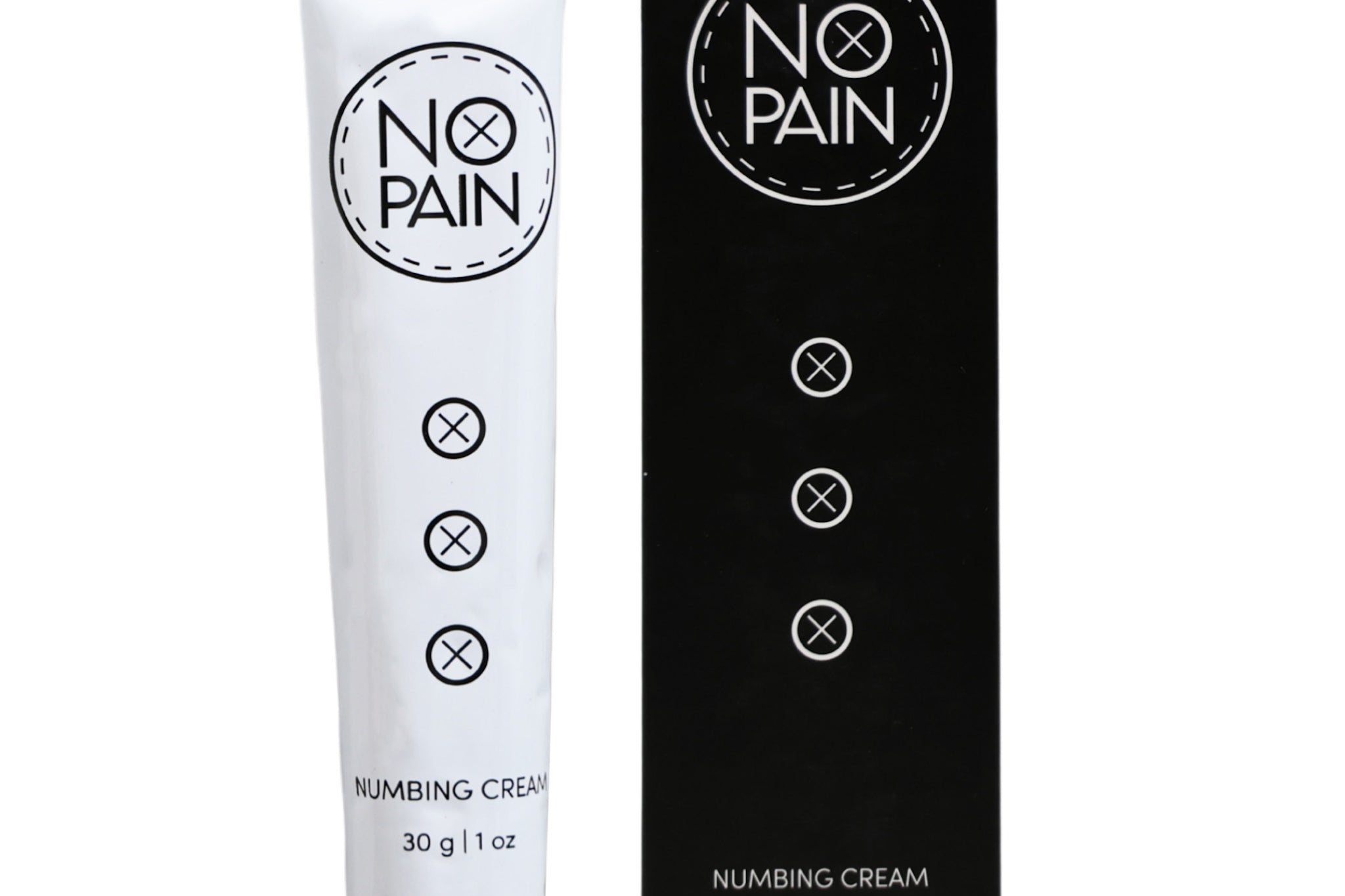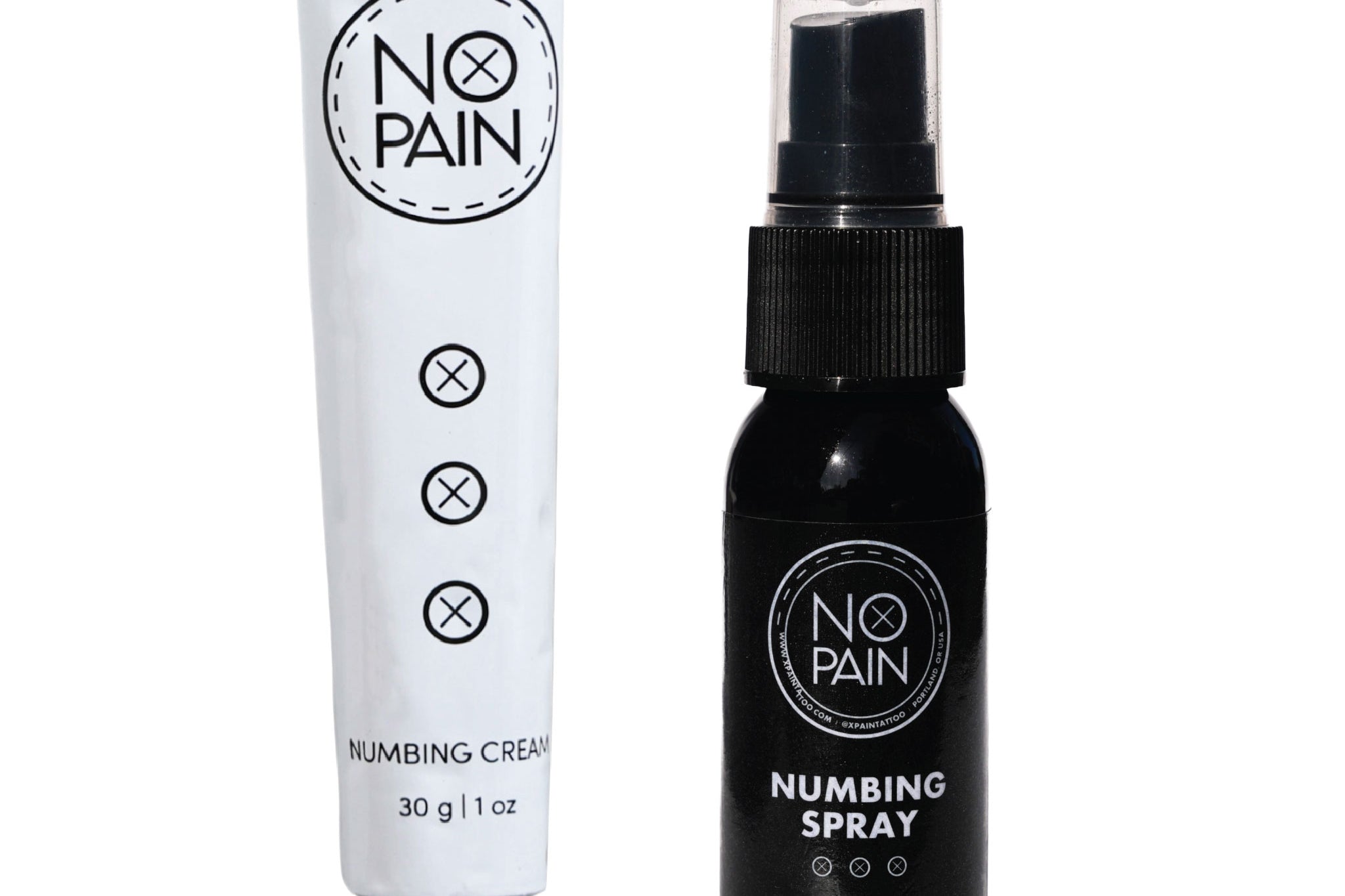The art of tattooing is a profound form of self-expression, a permanent mark of identity and artistry. Yet, for many, the anticipation of the tattoo needle is accompanied by an understandable apprehension about the pain involved. This single factor can deter individuals from getting the tattoo they desire or force them to endure long, uncomfortable sessions. Fortunately, advancements in topical anesthetics have introduced a powerful tool into the tattooist's toolkit and the client's preparation: the tattoo numbing spray.
Welcome to a Painless Possibility
Imagine sitting for a detailed, multi-hour tattoo session with significantly reduced discomfort. This is the promise of tattoo numbing spray—a product designed to make the tattooing experience more manageable and focused on the art rather than the pain. It represents a shift in the tattoo paradigm, where comfort and creativity can coexist without compromise.
What is Tattoo Numbing Spray?
A tattoo numbing spray is a topical anesthetic solution designed to be applied to the skin during the tattooing process. Its primary function is to desensitize the area, temporarily blocking pain signals from reaching the brain. The liquid format allows for rapid absorption and easy reapplication on broken skin, providing targeted relief precisely where the artist is working. They come in a spray bottle that has a spray pump attached to the top.
Does numbing spray work for tattoos?
Yes, when used correctly, tattoo numbing spray is highly effective. Its efficacy stems from its active ingredients, which are specifically chosen for their anesthetic properties. By temporarily deadening the nerve endings in the upper layers of the skin, the spray significantly dulls the sharp, stinging sensation associated with the tattoo needle, transforming a potentially painful ordeal into a far more tolerable experience.
Why Consider Numbing Spray for Your Next Tattoo?
There are several compelling reasons to use a numbing spray. For clients, it reduces pain and anxiety, especially for tattoos in notoriously sensitive areas like the ribs, feet, or spine. This comfort allows for a more positive overall experience. For artists, a calm and still client is the ideal canvas, enabling them to work more efficiently and produce cleaner lines and more intricate details.
What This Guide Will Cover
This comprehensive guide will explore the world of tattoo numbing sprays. We will investigate the science behind how they work, their numerous benefits, the key ingredients to look for, and a step-by-step guide to proper application. We will also compare sprays to other numbing products and provide insights on choosing a high-quality, reputable brand to ensure a safe and comfortable tattoo session.
The Science Behind the Comfort: How Numbing Sprays Work
To appreciate the effectiveness of tattoo numbing sprays, it's essential to understand the science of pain perception and how these formulas intervene. The process is a sophisticated interaction between chemistry and biology, designed to provide targeted, temporary relief.
Understanding Tattoo Pain and Your Skin's Response
The skin is the body's largest organ, rich with nerve endings called nociceptors that detect potentially harmful stimuli, including pressure, temperature, and the piercing action of a tattoo needle. When these receptors are activated, they send electrical signals through the nervous system to the brain, which interprets them as pain. This is a crucial protective mechanism, but during a consensual procedure like tattooing, it becomes a sensation to be managed.
The Role of Topical Anesthetics: Blocking Pain Signals
Tattoo numbing sprays contain topical anesthetics, which are substances that block nerve signals in a specific area. Unlike general anesthetics that induce unconsciousness, topical agents work locally on the skin's surface and subdermal layers. Their primary goal is to interrupt the transmission of pain signals from the nociceptors to the brain, effectively preventing the sensation of pain from being registered.
How Anesthetics Interact with Nerve Receptors
The most common active ingredient in numbing sprays, lidocaine, works by blocking sodium channels within the nerve cell membranes. For a nerve to fire an electrical signal, sodium ions must rush into the cell. Lidocaine temporarily obstructs these channels, preventing the ion influx. Without this "spark," the nerve cannot generate or propagate the pain signal, and the area becomes numb.
Absorption and Activation: From Spray to Skin
The effectiveness of a numbing spray is heavily dependent on its ability to be absorbed by the skin. Sprays designed for tattooing are formulated for use on broken skin—that is, after the initial linework has begun. The breaks in the skin from the needle allow the anesthetic solution to penetrate more deeply and quickly, reaching the nerve endings for rapid activation and potent numbing action.
Beyond Pain Relief: The Benefits of Numbing Spray for Your Tattoo Journey
While the primary function of a numbing spray is pain reduction, its advantages extend far beyond mere comfort. The integration of these products into the tattoo process benefits both the person receiving the art and the artist creating it, fostering a more positive and productive environment.
Enhancing the Client Experience
Is tattoo numbing spray effective in reducing pain during tattooing? Absolutely. For the client, this translates to a dramatically improved experience. Pain-related anxiety is minimized, allowing them to relax and remain still. This is especially beneficial for those with a low pain tolerance or those getting tattooed on sensitive body parts. By mitigating discomfort, numbing sprays make it possible for individuals to commit to larger, more ambitious tattoo projects they might otherwise have avoided.
Supporting the Tattoo Artist's Work
A client who is not wincing or flinching from pain is a superior canvas. Numbing sprays empower tattoo artists to perform at their best. They can work for longer, uninterrupted periods, which is crucial for large-scale pieces that require extended sessions. This sustained focus allows for greater precision, better color saturation, and finer detail work. Ultimately, a more comfortable client leads to a more efficient workflow and a higher quality final tattoo.
The Advantage of a Spray Delivery Method
The spray format offers unique advantages over creams or gels, particularly during the tattoo session itself. Its liquid consistency allows for quick application and rapid absorption into broken skin without leaving a thick, greasy residue that could interfere with the artist's work. It can be applied mid-session with minimal disruption, reactivating the numbing effect as needed to maintain client comfort throughout the entire process.
Decoding the Ingredients: What's in Your Numbing Spray?
The efficacy and safety of a tattoo numbing spray are determined by its formulation. Understanding the key ingredients—both active and inactive—is crucial for making an informed choice and ensuring you are using a product that is both powerful and skin-friendly.
Core Active Anesthetic Ingredients
The primary workhorses in numbing sprays are the active anesthetic agents.
- Lidocaine: This is the most common and effective topical anesthetic. It is a fast-acting nerve blocker that provides potent pain relief. The FDA allows for a maximum over-the-counter (OTC) concentration of 5% for topical use.
- Epinephrine: Often included alongside lidocaine, epinephrine is a vasoconstrictor. This means it temporarily narrows blood vessels in the applied area. This serves two key purposes: it reduces bleeding and swelling during the tattoo process, and it slows the absorption of lidocaine into the bloodstream, prolonging the numbing effect.
Skin-Loving and Anti-Inflammatory Ingredients
High-quality formulations often include skin-loving ingredients that support skin health. These can include anti-inflammatory agents like glycerol or hydrolyzed vegetable protein to help soothe irritation, or hydrating compounds like propylene glycol to prevent the skin from drying out. These additions contribute to a smoother process and can support the initial stages of healing.
Inactive Ingredients: The Hydrating Delivery System
The inactive ingredients in our Numbing Spray play a vital role in the product's overall performance and feel. Components like purified Aqua (Water) form the base, but the real magic comes from our unique blend of hydrating carriers, primarily Glycerol and Propylene Glycol. These key ingredients form the sophisticated delivery system for the active anesthetic, ensuring it's easily absorbed by the skin. Unlike typical harsh carriers, Glycerol and Propylene Glycol are also powerful humectants that draw moisture into the skin, preventing dryness and leaving the area soft and conditioned, which is essential for a smooth tattooing process. Additional components, such as Hydrolyzed Vegetable Protein, further enhance skin conditioning and support absorption.
Mastering Application: How to Use Numbing Spray for Optimal Results
Using a tattoo numbing spray correctly is the key to unlocking its full potential. The application method is distinct from pre-tattoo numbing creams and is specifically designed for use during the tattoo session.
Pre-Tattoo Application Guidelines (for intact skin)
It is critical to understand that most tattoo numbing sprays are formulated and intended for use on broken skin only and should not be applied to intact skin before the session begins. Unlike numbing creams, which are designed for pre-session use and require time to absorb through the unbroken epidermis, sprays are designed for rapid action once the skin has been opened by the tattoo needle. Applying them to intact skin will yield little to no numbing effect.
Application During the Tattoo Session (for broken skin)
How should tattoo numbing spray be applied for maximum effectiveness? The process is straightforward and integrated into the tattoo workflow.
- Wait for Broken Skin: The tattoo artist will complete the initial outline or the first pass of shading.
- Wipe the Area: The artist will wipe away excess ink and blood as they normally would.
- Apply the Spray: Generously spray the solution over the area being worked on. Do not be shy with the application.
- Allow Absorption Time: Cover the area with plastic wrap for 5-10 minutes. This prevents the spray from evaporating and allows the active ingredients to penetrate deeply.
- Resume Tattooing: The artist will remove the wrap, wipe the area clean, and continue tattooing on the now-numbed skin. The effect typically lasts for 30 to 60 minutes, and the process can be repeated as needed.
Pro Tip!
Reapplication: After the initial application, our No Pain Tattoo Numbing Spray can be reapplied as needed. There is no need to cover and wait. Just spray when the effect is reduced, or during color changes and breaks. It's a rhythm just like anything else. You will find what works for you.
Common Mistakes to Avoid
To ensure safety and efficacy, avoid these common errors:
- Applying too early: Using the spray on unbroken skin will be ineffective.
- Not using enough: An insufficient amount of spray will result in patchy or weak numbing.
- Not waiting for it to activate: Skipping the 5-10 minute wait time under plastic wrap for the first application will prevent full absorption and reduce the numbing effect.
- Using on sensitive areas without caution: Avoid contact with eyes, mouth, and other mucous membranes.
Choosing the Right Numbing Spray: A Comprehensive Guide
With a growing market of numbing products, selecting the right one can feel daunting. Focusing on key factors like ingredient quality, brand reputation, and regulatory compliance will help you choose a safe and effective spray.
Factors to Consider Before Purchasing
- Active Ingredient Concentration: Look for a spray with 5% lidocaine, the maximum strength permitted by the FDA for OTC products, ensuring maximum potency.
- Presence of a Vasoconstrictor: A formula containing epinephrine will offer the dual benefits of reduced swelling and a longer-lasting numbing effect.
- Brand Reputation and Accessibility: Research the brand. Look for brands that you can contact and ask questions. If you do contact them, do they get back to you in a reasonable time? At No Pain Tattoo you can contact us any time at: Email: contact@xpaintattoo.com, Phone / Text Message: +1 (503) 610-0963, WhatsApp: +1 (503) 610-0963.
Reputable Brands and Where to Find Them
Navigating the market is easier when you can identify trusted industry leaders. A prime example of a reputable brand that meets all the critical criteria is No Pain Tattoo. Their products are known for containing maximum-strength active ingredients, being manufactured in world class medical laboratories, and receiving consistently positive feedback from the professional tattoo community. Choosing a number one reputable brand like No Pain Tattoo provides peace of mind that you are using a top-tier product designed for professional results.
Numbing Spray vs. Numbing Cream: Which is Right for You?
Understanding the fundamental difference between numbing sprays and numbing creams is essential for a successful pain management strategy. They are not interchangeable; each is designed for a specific purpose and application time. The core distinction lies in their use on intact versus broken skin. Tattoo Numbing Cream is for pre-tattoo application on intact skin, while numbing spray is for use during the tattooing process on broken skin.
Advantages of Numbing Spray
The primary advantage of a numbing spray is its ability to provide rapid pain relief during a tattoo session. Because it is applied to broken skin, it absorbs almost instantly and gets to work within minutes. This makes it the ideal solution for managing pain in the middle of a long session (like a full back piece) when the initial effects of a pre-numbing cream may have worn off. Its fast-acting nature and ease of reapplication provide a continuous level of comfort that allows both artist and client to push through to the finish line.
Conclusion
Tattoo numbing spray has revolutionized the tattoo experience, offering a scientifically-backed solution to pain management that benefits everyone in the chair by providing near instant relief. By understanding how these products work—by blocking nerve signals with active ingredients like lidocaine and epinephrine—clients and artists can leverage them to their full potential. The key takeaways are clear: numbing sprays are specifically designed for rapid action on broken skin during a session, distinguishing them from pre-tattoo creams. Proper application, including allowing for absorption time, is crucial for maximum effectiveness.
Ultimately, the goal is a more comfortable, less stressful tattoo journey that allows artistry to flourish without the barrier of pain. When making a choice, prioritize quality and safety by selecting reputable brands like No Pain Tattoo that offer transparent ingredient lists and proven results. By incorporating a high-quality numbing spray into your next tattoo session, you can focus less on the discomfort and more on the beautiful, permanent art you are creating or receiving.





